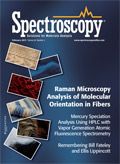SPIE Defense, Security, and Sensing 2013
A preview of what you will find at this year's conference in Baltimore, starting April 29
From smart phones that can scan a paycheck and deposit it directly into an online bank account to X-ray scanners that can literally see through you at the airport, technology is constantly expanding all around us, creating an increased need for security on personal, national, and global levels. Cue the international society for optics and photonics (SPIE) and their annual Defense, Security, and Sensing conference which will be held April 29–May 3, 2013 at the Baltimore Convention Center in Baltimore, Maryland. The conference offers a wide array of information on different security applications and environmental sensing technologies.

Hisham Ibrahim/GettyImages
Targeted Conferences
As in previous years, the conference is broken down into 55 smaller conferences that are focused on specific topics. There will be multiple technical sessions within each targeted conference. The conferences include some of the following topics:
- IR Sensing and Systems
- Defense, Homeland Security, and Law Enforcement
- Imaging and Sensing
- Sensing for Industry, Environment, and Health
- Emerging Technologies
- Laser Sensors and Systems
- Displays for Innovative Applications
- Space Technologies and Operations
- Unmanned, Robotic, Layered Systems
- Sensor Data and Information Exploitation
- Signal, Image, and Neural Net Processing
- Information Systems and Networks: Processing, Fusion, and Knowledge Generation
Courses
The 2013 SPIE Defense, Security, and Sensing conference will feature more than 50 courses and workshops, covering 11 new topics this year. The new topics range from fiber lasers and their applications to terahertz wave technology and applications, among others. These workshops and courses are a great way to meet industry experts and fulfill continuing education requirements.
Exhibition
Three days of the conference (April 30–May 2) will feature an exhibition with 500 suppliers of optics, lasers, sensors, image processing, spectroscopy, infrared systems, and optoelectronic components. A highlight of the exhibit will be the 3rd Annual Imaging Gallery Showcase, which displays "the finest examples of today's imaging technology … with an artistic flair," according to the conference program. The exhibit floor will be open Tuesday, April 30, from 10:00 a.m. to 5:00 p.m.; Wednesday, May 1, from 10:00 a.m. to 5:00 p.m.; and Thursdays, May 2, from 10:00 a.m. to 2:00 p.m.
Plenary Lecture and Special Events
The "Symposium-Wide Plenary Session" will take place Monday, April 29 from 5:00 to 6:00 p.m. with a talk from Arati Prabhakar, director of the Defense Advanced Research Projects Agency (DARPA) and a long-time leader in the research and high-tech fields. Following her presentation will be a welcome reception where all attendees are invited to socialize.
Throughout the conference there will be other special events, including award presentations, panel discussions, sessions, and networking opportunities. For example, on Wednesday, May 1, there will be a special panel discussion titled "Information Fusion and Robotics" and a special session titled "National Security Sensor Challenges." On Wednesday evening there will be a banquet and award ceremony for the conference's Lifetime Achievement award honoring Letitia A. Long, director of the National Geospatial-Intelligence Agency. Networking events will include a panel discussion titled "Getting Hired in 2013 and Beyond," a student networking event, "Lunch with the Experts," and a cocktail party titled "Early Career Professional Presentation and Reception" highlighting Allison Lami Sawyer and her start-up Rebellion Photonics. For more information on this conference, please visit the SPIE website: http://spie.org/defense-security-sensing.xml.

Newsletter
Get essential updates on the latest spectroscopy technologies, regulatory standards, and best practices—subscribe today to Spectroscopy.